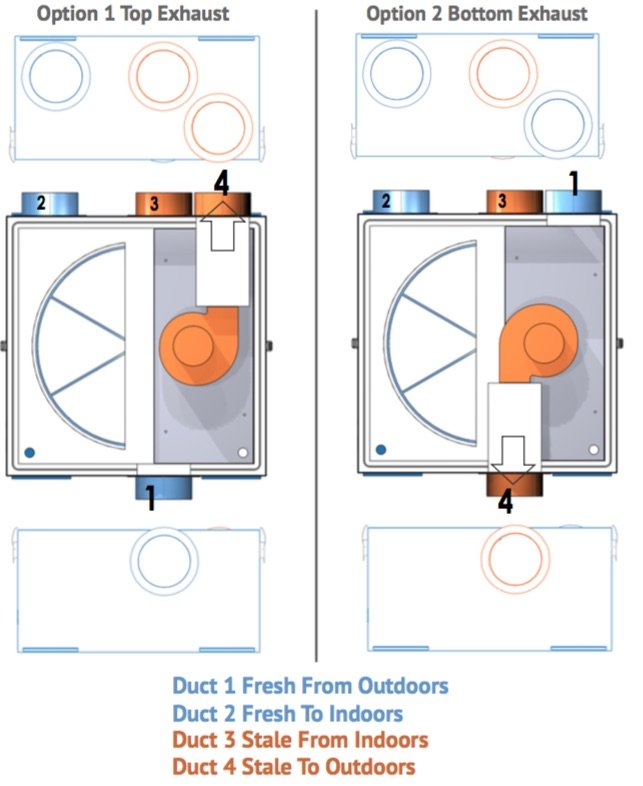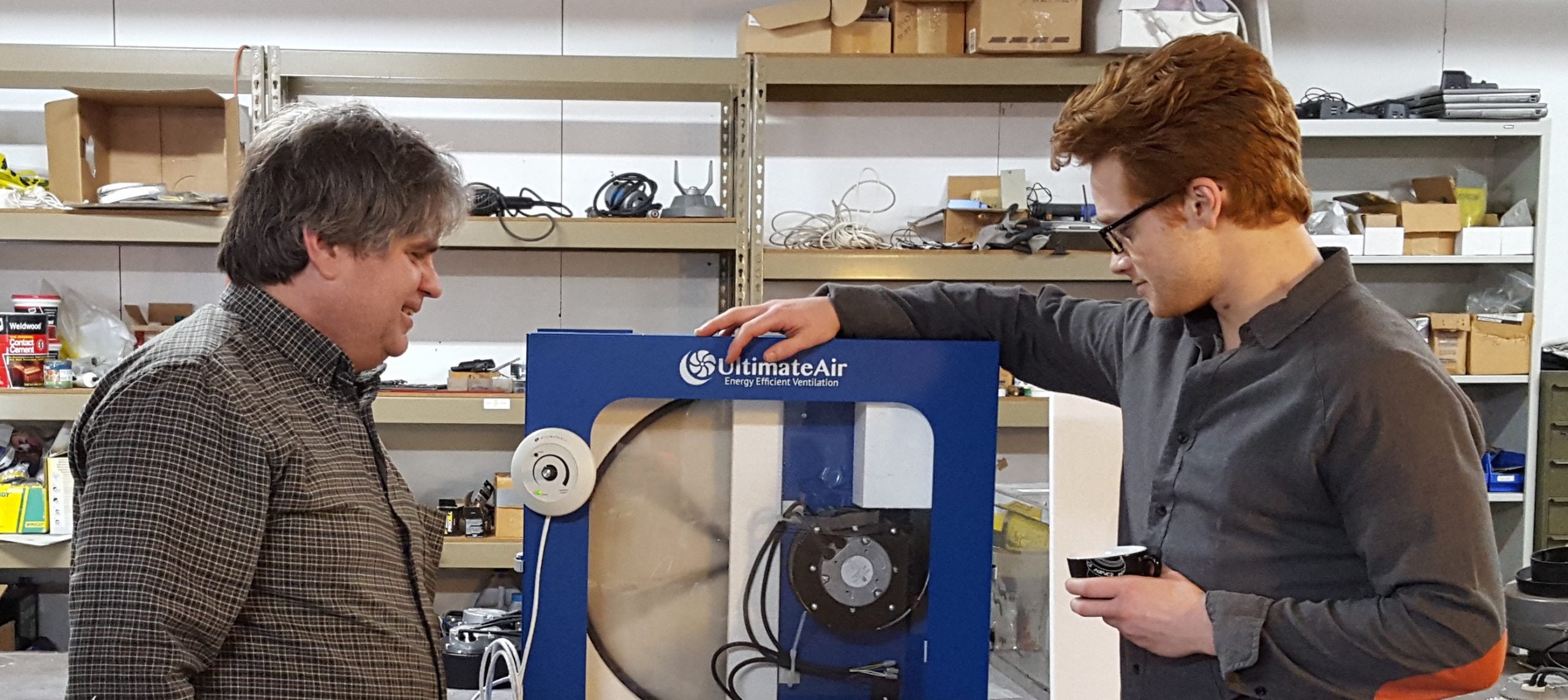Most zero energy homes have superior air tightness and require fresh air ventilation systems that effectively exhaust moist, stale air, while pulling in fresh, outdoor air. Since that outdoor air is generally not at the optimal temperature for comfort, it must be heated or cooled. That can take a considerable amount of energy to do. So, high-performance homes often employ a special device called an energy recovery ventilator (ERV).
Until recently those systems were too big for most apartments and small homes, because they move too much air and take up too much space. To address the growing number of small, efficient homes, manufacturers are making smaller units. One such product is the Ultimateair Recouperator ER80M.
The Ultimateair Recouperator ER80M delivers between 20 and 100 cubic feet per minute (cfm) of airflow. At the low end, that’s enough to provide general, or “whole-house,” ventilation for living spaces as small as 500 square feet with two people. At the high end, it’s enough to provide ventilation for a household of four people in 1,700 square feet. This ability to serve a wide range of home sizes and conditions is possible because, like it’s larger sibling, the 200DX, the newer ventilator uses brushless DC motors for variable speed operation.
In some installations, the main ventilator can serve the general, whole-house ventilation need at low speed and then boost to high speed to clear high humidity and odors. This means that the central ventilation system can also serve as a bath fan. Omitting a dedicated bath fan saves a bit of money, eliminates energy waste caused by directly venting conditioned air to the outside, and reduces the number of air penetrations needed for ductwork to the outside in a super-tight building envelope.
Both Recouperators are energy recovery ventilators (ERVs), meaning that they not only transfer heat, but also capture water vapor. Because that vapor contains energy, the efficiency of ERVs tends to be higher than heat recovery ventilators (HRVs). ERVs have another advantage. They don’t need a condensate drain, which simplifies installation and reduces cost slightly. ERVs are suitable only for certain climates, so be sure they are appropriate for your location before choosing this technology.
One big benefit of the new ER80M is its small size. The cabinet measures roughly 24”x 24”x 13”, making it smaller than many other units. Another boon for designers and installers is the adaptive duct connections. These connections make it possible to switch the direction of one of the internal fans during installation so that the ducts running to the outdoors can flow in the other direction (see image). The exhaust air to the outdoors can enter the unit either on the top or bottom, while the fresh air entering the unit switches, too. Locating a ventilation unit is often complicated by making connections to ducts that need to run in many different directions. The adaptive duct connections reduce the need for abrupt duct turns, improving airflow and making installation easier, and perhaps, less expensive.

Internal air filters are rated at MERV 12, which should capture pollen. UltimateAir claims that the unit will operate without freezing down to 10°F. Below that temperature, an external duct heater would be needed to prevent equipment damage.
Baby boomers are downsizing. Millennials are choosing smaller homes. Highly efficient homes are often designed to be more compact than standard homes. With all these developments, it’s good to see that ventilation products are appearing in appropriate sizes and with innovative features to meet the needs of these smaller homes

